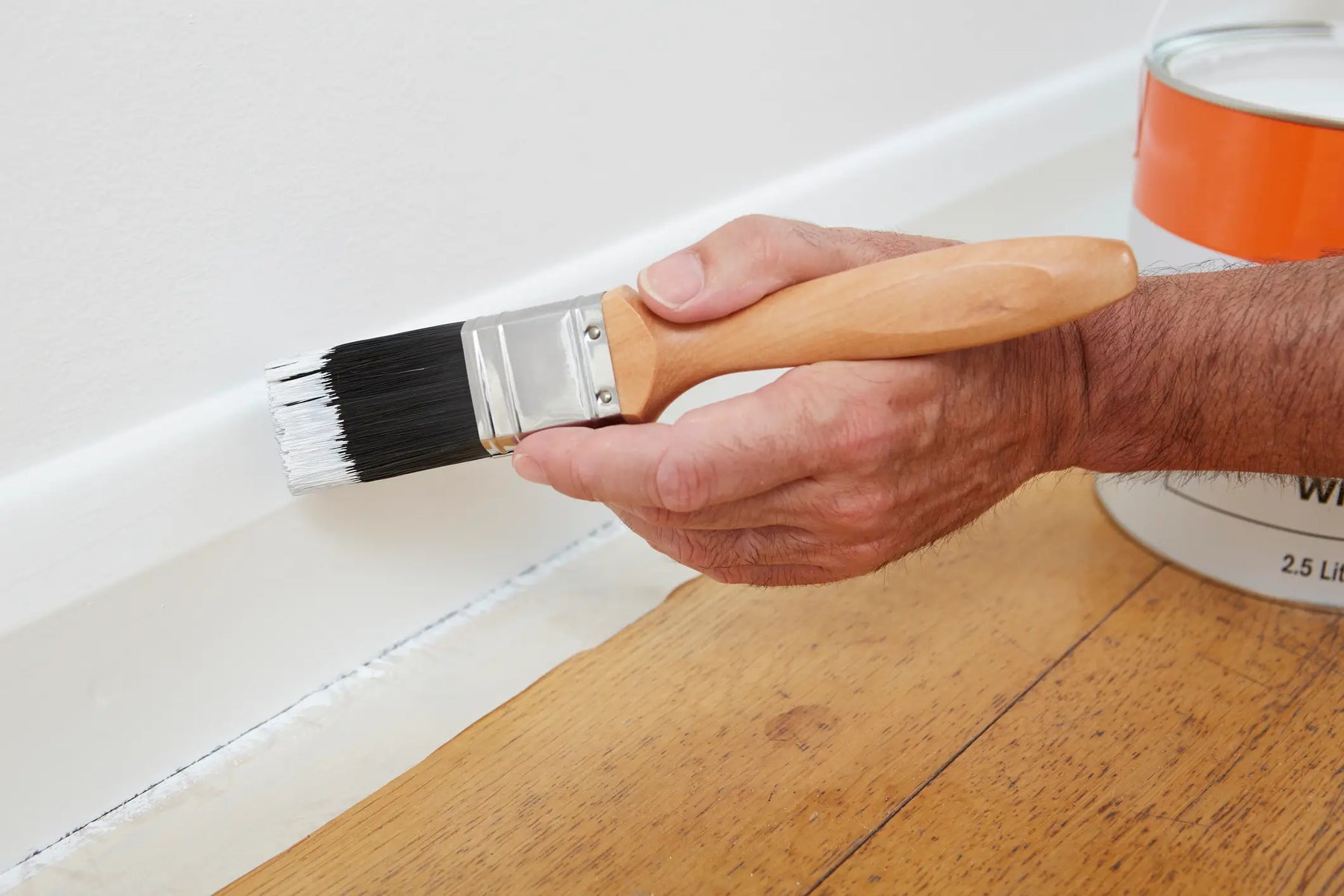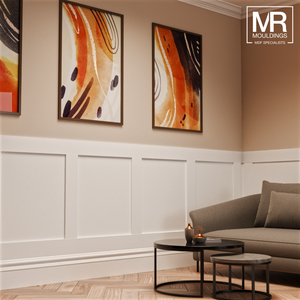
Should I Paint Skirting Boards Before Fitting? Key Insights from MR Mouldings
If you’re tackling a renovation or decorating project, you may find yourself asking: should I paint skirting boards before fitting them? It’s a common dilemma, especially among DIYers and professionals alike. The truth is, there’s no one-size-fits-all answer, but understanding the pros and cons of each approach will help you achieve a cleaner, longer-lasting finish.
You can paint skirting boards before or after fitting. Painting before allows easier access and a neater finish, while painting after lets you fill gaps and caulk joints. Many decorators recommend priming first, fitting the boards, then applying the top coat for the best of both methods.
At MR Mouldings, we supply a wide range of pre-primed MDF skirting boards designed to suit every method of installation. Whether you’re fitting boards before or after painting, our mouldings are precision-machined for a seamless result.
In this guide, we’ll cover:
-
The pros and cons of painting skirting boards before fitting
-
The benefits of painting after installation
-
What professionals recommend
-
Practical tips for achieving the perfect finish
Painting Skirting Boards Before Fitting: Pros & Cons
Many decorators prefer to paint their skirting boards before installation, especially if working in an empty or unfinished space. Here’s why it can work well:
Pros:
-
Easier Access: With the boards lying flat, it’s far easier to reach every edge, groove, and detail, especially on decorative profiles like Torus or Ogee.
-
Cleaner Finish: There’s less risk of paint getting on walls or flooring. This is ideal if your floors are already fitted or your walls freshly painted.
-
Faster Workflow: You can paint multiple boards at once, in bulk, rather than masking and painting around a room’s perimeter.
-
Controlled Conditions: Painting in a workshop or garage means better lighting, ventilation, and reduced chance of dust or debris landing on wet paint.
Cons:
-
Risk of Damage During Installation: Even fully dried boards can scuff or chip when being cut, fixed, or nailed into place. These marks may require touch-ups after fitting.
-
Gaps & Caulking Still Needed: Even with pre-painted boards, you’ll likely need to fill small gaps or nail holes after fitting, meaning some final painting is usually still necessary.
-
Difficulty Aligning With Decor: If you paint early in the project, your colour or finish might not match your final wall or flooring choices.
Painting Skirting Boards After Fitting: Pros & Cons
Painting skirting boards after they’ve been installed is the more traditional route and is still widely used in both residential and commercial projects.
Pros:
-
Seamless Finish: You can caulk joints, fill any gaps, and sand down imperfections before applying paint, leading to a polished, professional result.
-
Easier to Tidy Up: If boards get knocked or marked during fitting, there’s no need to worry; painting is your final step.
-
Room Comes Together as One: Painting in situ allows you to coordinate your skirting with wall and floor colours, ensuring everything matches once the room is complete.
Cons:
-
Trickier Technique Required: You’ll need to be careful when cutting in along walls and floors to avoid getting paint where it doesn’t belong.
-
Time-Consuming Prep: You’ll need to mask off flooring or use shields to prevent drips or overpainting.
-
Limited Access: Intricate mouldings can be harder to paint once they’re close to the wall or floor, particularly in tight corners or behind furniture.
What Do Professionals Recommend?
In practice, many professionals adopt a hybrid method for the best results:
-
Prime or undercoat the skirting before fitting, especially important for MDF, as it prevents swelling or moisture absorption.
-
Fit the boards, allowing for any trimming or mitring on site.
-
Fill, sand, and caulk gaps and joints to create a clean, cohesive line.
-
Apply final top coats once everything is in place.
This approach gives you the best of both worlds: the ease of initial painting with the precision of post-installation finishing.
At MR Mouldings, all of our MDF skirting boards are available pre-primed, saving you time and ensuring excellent paint adhesion. We recommend a light sanding before the final coat to achieve a smooth, flawless finish.
Tips for Painting Skirting Boards
Whether you paint before or after fitting, these practical tips will help you get the most out of your mouldings:
-
Use high-quality paint: A satinwood or eggshell finish offers durability and a subtle sheen. Water-based paints are popular for their fast drying time and low odour.
-
Sand between coats: Lightly sanding after the undercoat removes any raised fibres or imperfections and gives a more professional finish.
-
Choose the right brush: Use an angled sash brush for precision around moulded edges and corners.
-
Use caulk after fitting: Filling any gaps between the wall and board before the final coat will ensure a seamless line.
-
Avoid overloading the brush: Too much paint can cause drips and pooling in detailed profiles.
-
Mask carefully: If painting after fitting, use masking tape or protective shields to avoid getting paint on your floor or freshly finished walls.
Frequently Asked Questions
Can I fit skirting boards without painting them?
Yes, but unfinished boards will be more prone to damage and staining. We recommend at least priming MDF boards before or immediately after fitting to protect them.
What’s the best paint for skirting boards?
Satinwood and eggshell finishes are popular for their durability and clean appearance. Water-based options dry faster and are easier to clean up.
How many coats of paint do skirting boards need?
Typically, 1 undercoat and 1–2 topcoats provide full, even coverage. Always allow drying between coats.
Should I paint skirting boards before laying carpet or flooring?
If possible, yes. It’s easier to paint the boards before flooring is laid. However, many decorators choose to paint after fitting and simply protect the floor with masking tape or a drop cloth.
Can I use the same paint for architraves and skirting boards?
Absolutely. For a cohesive look, use the same colour and finish on all mouldings throughout a room or property.
Why Choose MR Mouldings?
At MR Mouldings, we specialise in supplying high-quality MDF skirting boards in a wide range of profiles and finishes. Whether you're a DIYer, a decorator, or a trade professional, we make it easy to get the look you want, with the quality and service you expect.
-
Pre-primed options for faster finishing
-
Popular profiles include Bullnose, Chamfered, Torus, and more
-
Made to order in custom heights and thicknesses
-
Matching architraves are available for a complete finish
-
Fast delivery across the UK
Explore our full Skirting Board Collection or speak to our team for advice on what will work best for your project.
Conclusion
So, should you paint skirting boards before fitting? The answer depends on your space, timeline, and preferred finish. Pre-painting can save time and create a tidy result, but painting after fitting gives you more flexibility to fill gaps and perfect the final look.
For the best outcome, many decorators choose a blended approach: priming before fitting, then finishing in place.
Whichever method you prefer, MR Mouldings has the high-quality, pre-primed skirting boards you need to get the job done right.
Ready to start your project? Browse our skirting board range today and get free delivery on qualifying orders.




